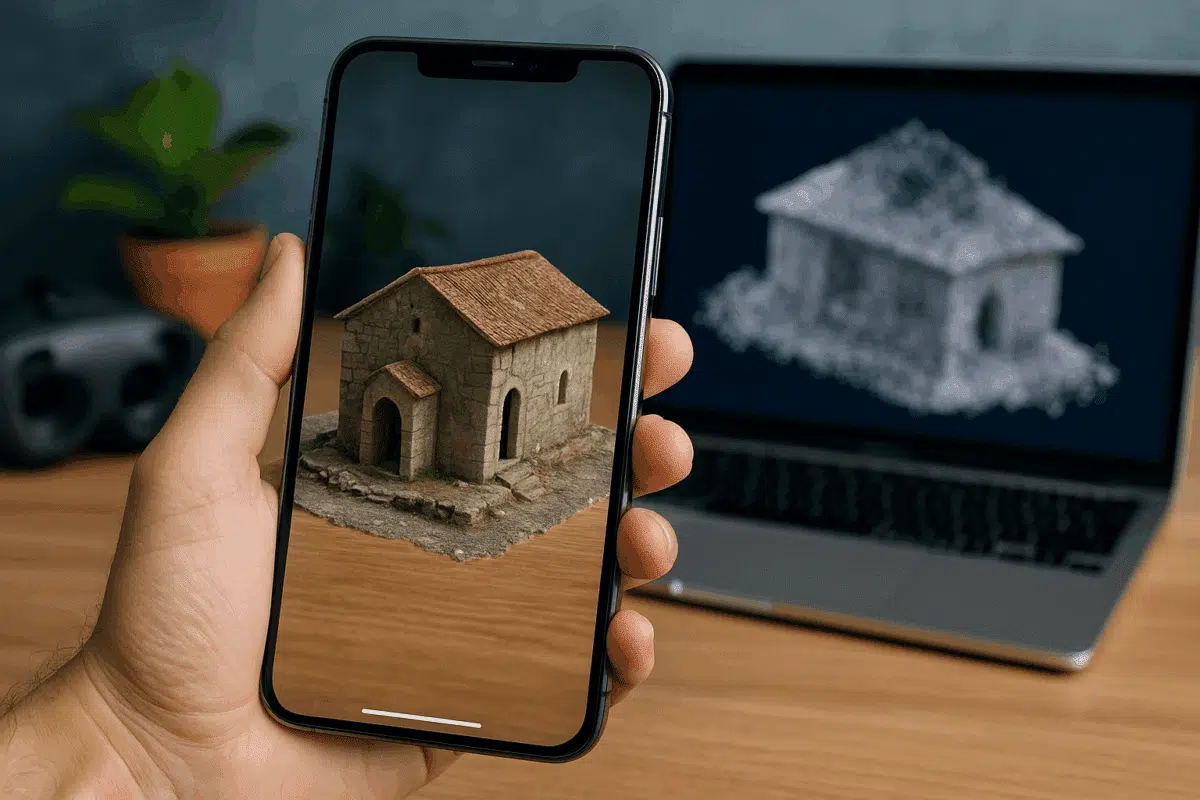Sharing 3D models online has never been easier thanks to modern formats like GLB, USDZ, and Cesium. Whether you want to publish models for WebAR (Web-based Augmented Reality), mobile viewing, or immersive web maps, Agisoft Metashape offers the tools to export in formats compatible with popular platforms. This guide walks you through how to prepare and export your models for GLB (for Android/WebGL), USDZ (for iOS AR), and 3D Tiles (for CesiumJS).
1. Why Export for Web and Mobile AR?
- Allow users to view 3D content directly in a web browser
- Enable AR visualization on smartphones with no app needed
- Publish models in online 3D maps and virtual galleries
- Share projects with clients, students, or collaborators
WebAR and mobile formats make your photogrammetry work highly accessible—ideal for museums, architecture, archaeology, tourism, and education.
2. Step 1: Prepare Your Model in Metashape
Before exporting, ensure your model is optimized for web and mobile:
- Use Decimate Mesh to reduce poly count (50k–300k faces recommended)
- Build texture using Diffuse map, 4096×4096 or lower
- Check for holes and non-manifold geometry
- Center the model near origin (0,0,0) if needed for AR positioning
3. Exporting GLB (for Android, WebGL, Sketchfab)
GLB is a binary version of glTF—perfect for Android AR viewers, WebGL, and Sketchfab. To export:
- Go to File → Export Model
- Choose format: glTF (*.glb)
- Enable Embed textures
- Use Y-up axis orientation
- Apply compression if targeting mobile
Test the GLB on Don McCurdy’s GLTF Viewer or upload to Sketchfab.
4. Exporting USDZ (for iOS and Apple AR Quick Look)
USDZ is Apple’s preferred format for WebAR on iPhones and iPads. Since Metashape doesn’t export directly to USDZ, you must convert your model:
- Export from Metashape as OBJ or glTF
- Use Reality Converter (Apple) or Google’s USD from GLTF tool
- Adjust scale and preview using Apple’s Quick Look
You can then embed the USDZ file in Safari with just one line of HTML.
5. Exporting for CesiumJS (3D Tiles)
Cesium is a powerful platform for streaming 3D models and maps online. You can export to 3D Tiles using the Cesium Exporter plugin for Metashape:
- Download and install the Cesium Metashape Plugin
- Run the plugin from Tools → Scripts → Export to Cesium
- Select model or point cloud as the source
- Choose output folder and enable tiling options
The result is a directory containing tileset.json and binary data, ready to upload to Cesium ion or self-hosted viewers.
6. Optimizing Your 3D Assets for WebAR
- Limit polygon count to under 100k for mobile smoothness
- Use single 4K or 2K texture for fast load times
- Export in metric scale (1 meter = 1 unit)
- Keep total file size under 10MB if possible
- Test across devices and browsers (Android, iOS, Chrome, Safari)
7. Hosting and Embedding
Once exported, you can host your 3D model on:
- Sketchfab: For easy embedding and AR support
- GitHub Pages: Free static hosting for glTF/GLB
- Cesium Ion: Cloud platform for Cesium tilesets
- Your own website: Use Model Viewer or Three.js
Conclusion
Thanks to flexible export options in Metashape, it’s now easy to bring your 3D models into the world of mobile AR, WebGL, and online geospatial viewers. By optimizing your models and choosing the right format—GLB for WebGL, USDZ for iOS AR, or 3D Tiles for Cesium—you can reach a wider audience and give your reconstructions life beyond the desktop. With just a few adjustments, your photogrammetry can become an interactive, immersive experience on any device.


